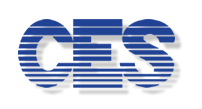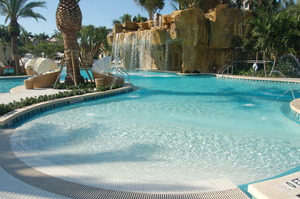
Everyone is so busy these days that it seems that we don’t have time to pay attention to even ONE more thing. You have to focus on your operations, code compliance and safety, your staffing, and your budget. Sometimes the small details make a big difference in your operations.
Such is the case of the use of Stabilizer (Cyanuric Acid or CYA) in your pools. Too much can lock up chlorine and turn your pool into a virtual swamp. Too little can double your chlorination costs, and just the right amount can cut your chlorination costs by nearly half, while helping provide crystal clear pool water. How much is the right amount? First let’s back up a bit.
About CYA: In 1956, it was discovered that chlorine would stay in the water longer if CYA was added… about 4 to 8 times longer to be more exact. As an example, 10 PPM of stabilizer will protect about 1.5 PPM of chlorine, but any chlorine in excess of 1.5 PPM in the pool is unprotected and is subject to UV destruction at a rate of 90-95% in 2 hours. That’s your money going down the drain. Our rule of thumb in the 80s was that 30 PPM would cut your chlorination costs in half.
In general, it takes about 8-10 times the CYA to effectively protect free chlorine… so it takes 25 PPM to protect 3.0 chlorine (give or take), and so on. This is widely misunderstood, as many felt that holding ANY level of CYA gave them a license to hold their pools at elevated chlorine levels, but we know that the aforementioned “excess chlorine” (which is not protected) is being stripped out at a rapid rate.
How much to use? How much stabilizer to use is a HOT topic which deserves some conversation.
While the 2016 Department of Health Codeallows 100 PPM of stabilizer MAX in pools, and Zero in spas and indoor pools, best practice has traditionally been to maintain 20-30 PPM in normal condo and hotel pools, and 10-15 PPM in heavily used activity pools and water parks. Anything over 50 PPM is generally considered wasted as 100 PPM does not provide substantially more protection over 25 PPM, and the minimal additional protection it DOES provide does not justify the additional cost.
It gets more complicated. With the new codes and studies that confirm CYA slows down the “rate” of disinfection to the point that treating for fecal accident WITH or WITHOUT CYA are very different indeed. This led to the updated CDC 2016 guidelines for shocking pools after fecal accidents which shows:
• Formed stool:
• 2 PPM (chlorine) for 25 minutes (no CYA)
• 2 PPM for 50 minutes (with CYA)
• Diarrheal stool:
• 20 PPM for 12.75 Hours (no CYA)
• With CYA… lower CYA to <15 PPM, then:
• 20 PPM for 28 hours
• 30 PPM for 18 hours, or
• 40 PPM for 8.5 hours.
This means that if your pool is prone to fecal accidents, you may be best off keeping your CYA levels below 15 PPM, so that you won’t need to drain the pool before shocking. Think about that for a minute… you have a fecal accident and need to shock the pool. Your manager is mad, but they’ll get over it. Then you have to tell them that you need to drain half the pool in order to get the 30 PPM stabilizer level below 15 – the proper amount per the CDC guidelines. Sounds like a bad day?
While you will use a BIT more chlorine at 15 PPM than you will at 20-30 PPM, the time savings during a fecal accident are normally very appreciated by your patrons and owners.
A couple of notes: You only need to test for stabilizer about once per week per best practice, and a weekly correction will work fine. Also, during times of heavy rainfall, your team needs to be more vigilant in testing and adjusting stabilizer levels. Most customers have found it better to use an accurate digital test kit like the Spin Touch, or Palintest tester as the standard “look for the dot” CYA test kits don’t normally measure down to these low levels. Many customers also seem to prefer using CES’s quick dissolve powdered CYAwhich is considerably easier to apply than waiting for the traditional granular CYA to dissolve…..
Please contact your CES rep for more information or with any questions on testing methods, stabilizer, etc. Our goal is to assist you in maintaining moderate chlorination costs for the long haul.





